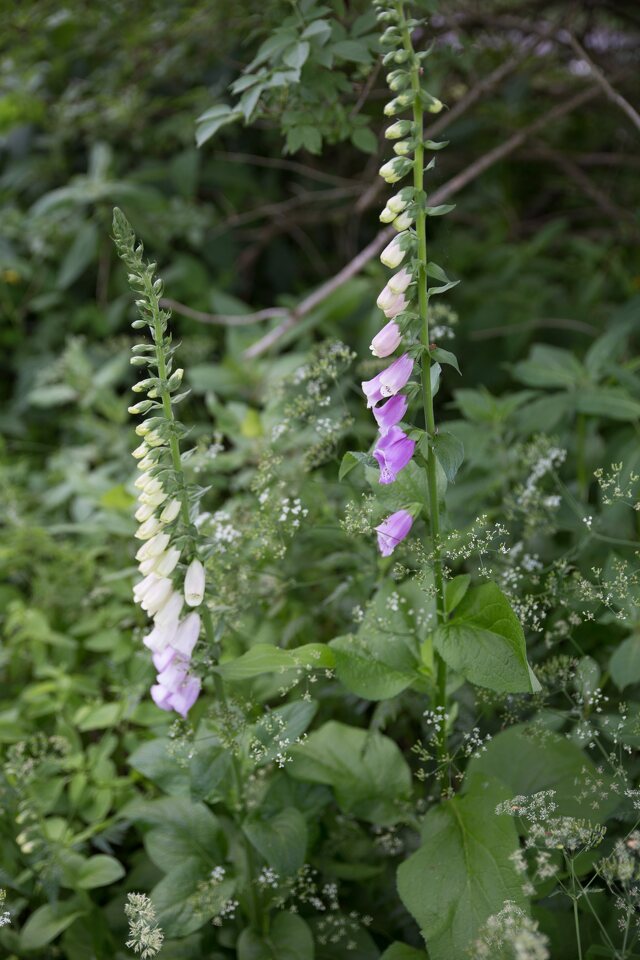
Digitalis purpurea · paprastoji rusmenė
- common foxglove
- Roter Fingerhut
- paprastoji rusmenė
- sarkanā uzpirkstīte
- naparstnica purpurowa
In Western Europe, it is native to Belgium, Czech Republic, France, Germany, Ireland, Portugal, Spain, Sweden and the United Kingdom. In North Africa the species can be found in Morocco. Additionally, it occurs naturally on the islands of Corsica and Sardinia. Digitalis purpurea has been introduced throughout the world into countries and continents outside of their natural range. Due to introductions the species has expanded its range further into Europe and Africa as well as colonizing continents outside of their natural range such as Asia, North America, South America and Oceania.
Digitalis purpurea is an herbaceous biennial or short-lived perennial plant. The leaves are spirally arranged, simple, 10–35 cm long and 5–12 cm broad, and are covered with gray-white pubescent and glandular hairs, imparting a woolly texture. The foliage forms a tight rosette at ground level in the first year.
The flowering stem develops in the second year, typically 1–2 m tall, sometimes longer. The flowers are arranged in a showy, terminal, elongated cluster, and each flower is tubular and pendent. The flowers are typically purple, but some plants, especially those under cultivation, may be pink, rose, yellow, or white. The inside surface of the flower tube is heavily spotted. The flowering period is early summer, sometimes with additional flower stems developing later in the season. The plant is frequented by bees, which climb right inside the flower tube to gain the nectar within. The fruit is a capsule which splits open at maturity to release the numerous tiny 0.1-0.2 mm seeds.
The plant is a popular ornamental, providing height and colour in late spring and early summer. Cultivated forms often show flowers completely surrounding the central spike, in contrast to the wild form, where the flowers only appear on one side. Numerous cultivars have been developed with a range of colours.
Due to the presence of the cardiac glycoside digitoxin, the leaves, flowers and seeds of this plant are all poisonous to humans and some animals and can be fatal if ingested.
Dvimetis arba daugiametis žolinis augalas. Stiebas stačias; užauga iki 1,5 m aukščio. Lapai dideli, pailgi, plaukuoti; žiedai dideli, rusvai geltoni arba geltoni, susitelkę į trumpą retą vienašalę kekę; vaisius – dėžutė su daug sėklų. Žydi birželio-liepos mėnesiais. Nuodinga, turi širdį veikiančių glikozidų.
‥
0 comments
Add a comment
Comments